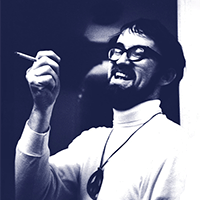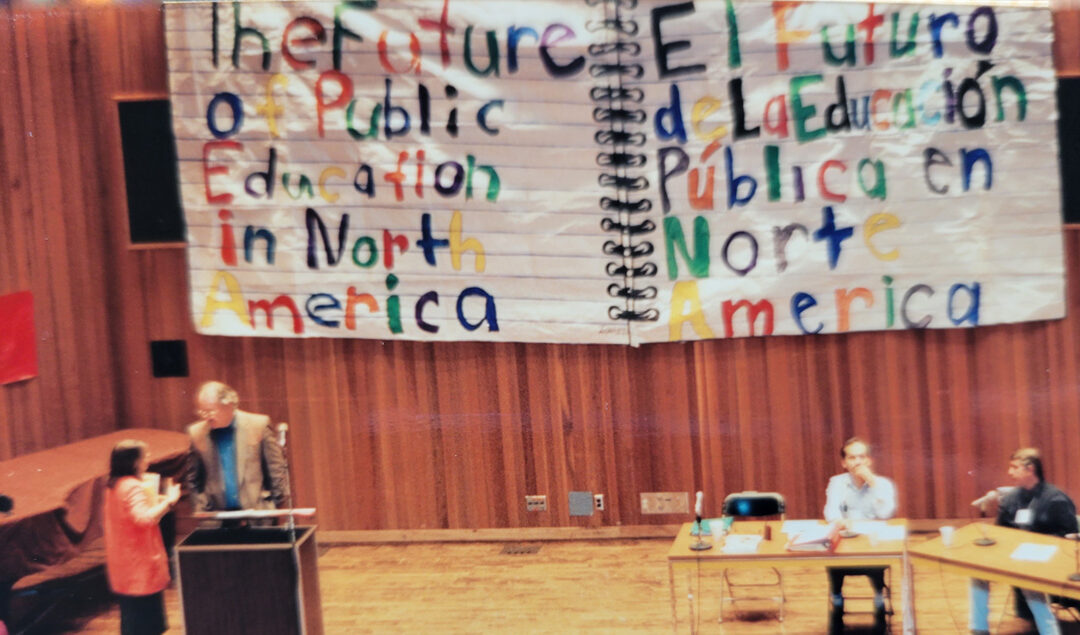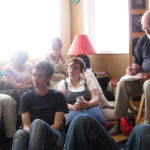4) FOR WHAT: What is the target of the organization?
“You need to know the institution that you have chosen as your target as well as, if not better than. those who presently control it. This is often not that difficult to do because you will discover that ‘leaders’ of many institutions rule out of power and not out of knowledge. Knowing the institution makes your organization legitimate, and the institution look silly.” – Organizer’s Notebook on Public Utilities and Energy, 1976
Dan took on NAFTA (the North American Free Trade Agreement) before most people had even heard of it.
While he was director of the Labor Center, Dan followed the Washington Roundtable, a steering committee of private sector employers influencing policy in Washington state. There he started to notice language that turned on “restructuring education.” He ended up organizing the Trinational Coalition, an organization with three sections in Canada, the United States, and Mexico, to mirror the terrain that NAFTA was privatizing.
He heard about a Forum on NAFTA in Zacatecas, Mexico and flew down to learn more about it. The Canadians Teachers’ unions paid for Dan to go to a conference that was set up to explain NAFTA to lawyers. He “was the only one who wasn’t a suit.” One of the presenters said something that set Dan on the right course to understand the agreement and its implications: “If you want to see what NAFTA is – Look at the dispute resolution process.”
Dan believed in reading primary documents so, of course, he read the entire Agreement – and got a lot of other people to read it. “I have a copy of NAFTA in Spanish downstairs.” By reading the Agreement, he could understand not only their language but their purpose. NAFTA was not just about lowering trade and tariff regulations, it was an entire governance system.
The Agreement credentialed 100 specific professions, allowing travel across borders without a passport. That deregulation of borders could be a step in the right direction, but the balance of power tipped firmly towards privatization and neoliberal globalization to determine who would be credentialed. NAFTA also reclassified education as a “service” that could be commodified.
Dan learned about the closed arbitration system and the monetary penalties for violating NAFTA. He learned that Chapter 11 was the meat of NAFTA, more powerful than any other trade agreement that had been adopted. “Its purpose was to eliminate all publicly-owned properties, privatize the nation-state and raise finance to be the dominant force in post-accord capitalism. That’s what every agreement was about.”
What did Dan decide to do about it? He organized. As part of the Labor Center, he and the staff organized a conference titled “The Future of Public Education” in January 1993 at Evergreen: 40 Mexican delegates, 30 Canadians, and over 100 union members and students.
They learned from the Mexican delegates (among other things) about what a strong public sector and civil society actually looks like and what it does. Research in Mexico, for instance, was predominantly held in state universities and public institutions, not private industry or private foundations. Research was paid for by public funds and ostensibly conducted in the interest of the public. “NAFTA and neoliberal adjustments threatened the production of knowledge as part of the public domain,” wrote Hugo Aboites.
The convergence of realities across these three countries and the depth of analysis sparked a commitment to move together to protect and reimagine public education. 200 union delegates together developed an unequivocal platform: “The continuation of accessible, democratic, universal, free, quality public education is endangered by the proposed North American Free Trade Agreement. . . We aspire to a rejuvenated university system in the service of social and democratic development.”
There needed to be a mechanism to carry on the work of the conference – “that is the only reason to do a conference,” Dan says: to form an organization that makes any agreement real. The public education conference, in its variety of working groups, laid out the potential function of an organization – communication and research clearinghouses in each country sharing information about the impacts of NAFTA; following and monitoring the implementation of NAFTA and the financing of private education corporations; and establishing a deeper trinational collaboration among labor centers, universities, and higher education unions.
One way to see the institution you’re up against, is to set up a parallel institution. In the case of NAFTA, no one country’s vantage point will be enough. The Trinational Coalition was envisioned to create a “continental environment” that mirrored corporate attempts to establish a “North American identity” that traversed the NAFTA terrain – Canada, United States, and Mexico. The Coalition would be a “parallel commission on public education, capable of planning and mobilizing continental union action to combat the privatization and commercialization of public education embedded in the NAFTA.” –from the original documents.
Dan’s draft proposal for the establishment of the Trinational Coalition followed his organizing framework. The proposal includeed a clear rationale based in research and analysis; a set of principles and goals based on the platform the conference delegates developed in 1993; an organizational structure for membership, leadership, and governance, focusing on union commitment to the endeavor in the form of agreement and funding’ and a proposed Continental Council to meet every three years to make decisions and set policy.
Organizing globally brings different challenges, and it was difficult to convince parochial (and sometimes racist) U.S. labor unions to continue working with the Mexican sections. It was expensive to come together, and broad-based strategies were not embraced. Dan produced a strategy paper containing research on the 10 richest people in Mexico, identifying connections among those who owned regional airports. He could estimate a dollar expenditure for every teacher going to Mexico re: tourism, that would support a strategy of negotiating with unions to get demands met based on that amount. The coalition did not take it up. Dan created a shape, but there was not a will to fill it. Sometimes you can make it happen, and sometimes you can’t.
Biennial conferences were generative and built relationships across borders, but after 14 years as coordinator of the Trinational Coalition, Dan left the position in 2009. Understanding the details of NAFTA had laid the foundation to the next global mutation of corporate control, the World Trade Organization, founded in 1995 just after NAFTA became law and scheduled to meet in Seattle at the Ministerial Round in1999.
Dan and I were part of the massive organizing to expose and shut down the World Trade Organization in 1999, and we read all their primary documents word for word, working out of his Evergreen office that summer. We studied the judicial procedures and outlined the direct effects and implications to the people who it would affect the most. We created popular education about it and got it into schools, union halls, and even prisons. We organized a conference to precede the ministerial and to mobilize the forces who could move against it. Dan and I worked out of his Evergreen office the summer of 1999. I was one of the founding organizers of the Direct Action Network which successfully shut down the ministerial in November.
That work was informed by Dan’s study and organizing against NAFTA. To name and study the target, the enemy, the opposing institution creates the opportunity to challenge it directly. Dan quotes Sun Tzu often: ‘Keep the Enemy in Front of You’ is one of the big rules for challenging illegitimate authority.
Identifying the target is crucial to setting the goal of the organizing drive, and the main goal is, in fact, to win.
Return to Framework for Organizing
Continue to HOW: What are the methods to win victory?



